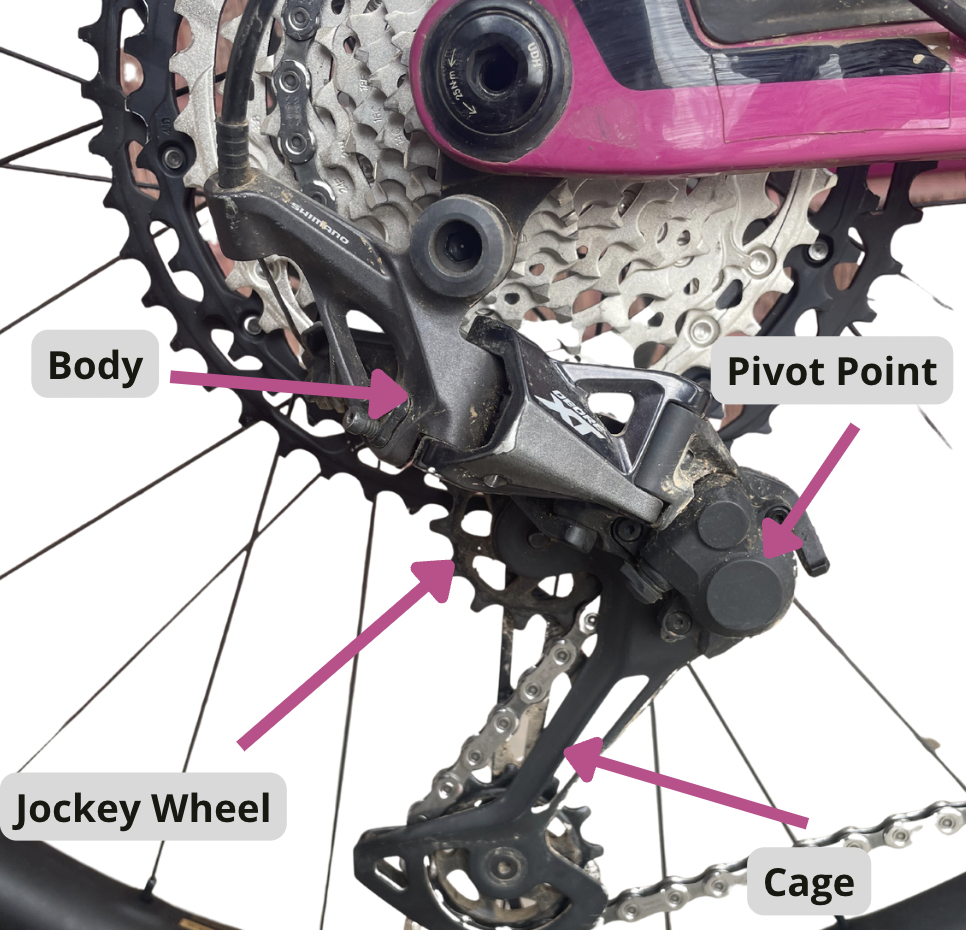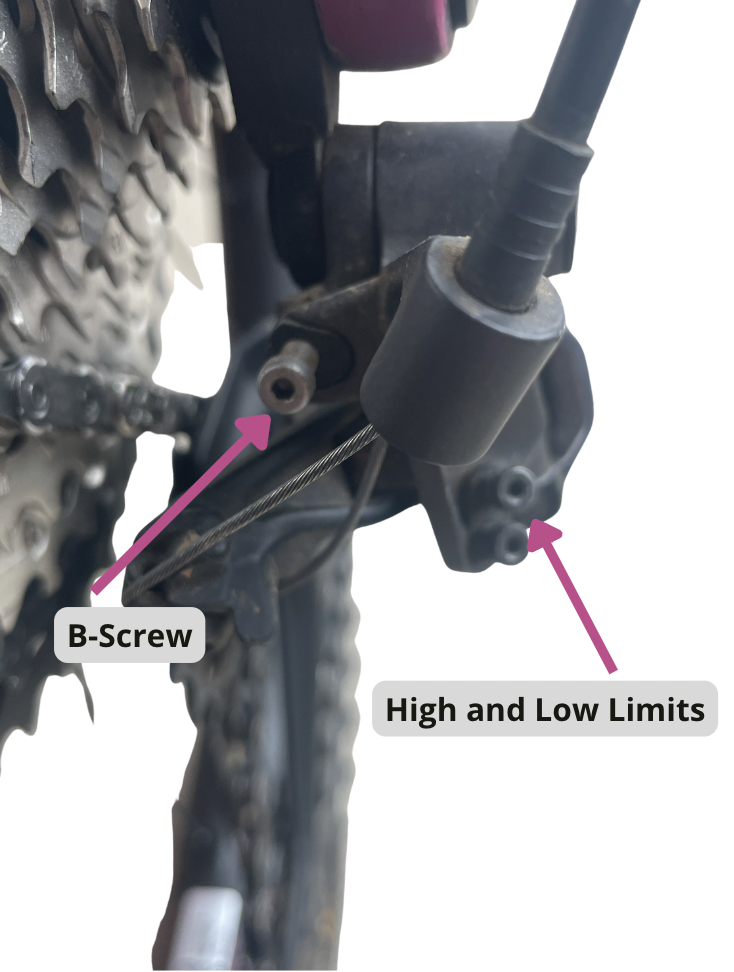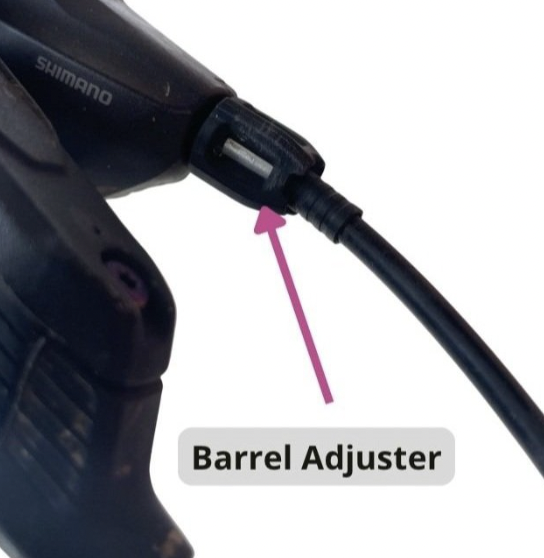The derailleur is one of the most important parts of a mountain bike. It shifts the chain from one gear to another, allowing you to adjust your bike's speed and power. Understanding how parts of the derailleur work together will help you identify and solve issues. In this guide, we’ll give an overview of how the derailleur works, as well as some tips for taking care of it.
Parts of a Mountain Bike Derailleur
Derailleur Body: The main body of the derailleur, which houses the spring and the pivot points.
Jockey Wheels: small wheels that guide the chain through the derailleur. They are mounted on the cage and spin on their own bearings.
Pivot Points: Points around which the derailleur rotates. There are typically two pivot points on a derailleur—one that attaches to the derailleur hanger, and a second that connects to the cage.
Cage: Part of the derailleur that holds the jockey wheels and guides the chain from one gear to another.
Spring: Pulls the derailleur towards the smallest cog on the cassette. When you shift to a larger cog, the spring is compressed. When you shift to a smaller cog, the spring expands.
Barrel Adjuster: A small knob that adjusts the tension in the derailleur cable. This allows you to fine-tune the shifting performance of your derailleur.
B-screw: A small screw that adjusts the distance between the jockey wheels and the cassette. The B-screw ensures that the jockey wheels are in the correct position to guide the chain.
High and Low Limits: High and low limits control the range of the derailleur.
How to Care for Your Derailleur
Keeping your derailleur in good working condition is essential for a safe, smooth, and fun ride. Here are some tips to keep your mountain biking derailleur singing:
Clean and lubricate regularly: Dirt and debris can accumulate on your derailleur, causing it to malfunction. Try to get into a habit of cleaning your derailleur after every ride. Use a soft brush or cloth to remove any dirt, and then apply a lubricant to the moving parts. (I will make an annotated video unless you have one.)
Adjust the derailleur: The derailleur needs to be adjusted properly to ensure smooth shifting. If you notice any issues with shifting, such as difficulty shifting or the chain falling off, it may be time to adjust the derailleur. You can adjust it yourself with the help of a derailleur adjustment tool, or take it to your favorite bike shop.
Replace worn parts: Over time, the components of the derailleur can wear down or break. Check your derailleur regularly for signs of wear or damage—common issues include bent hangers and worn-out jockey wheels. If you notice damaged parts, replace as soon as possible to prevent further damage.
Avoid hitting the derailleur: The derailleur is a delicate part of the bike and can be easily damaged if you hit it on a rock or tree. As much as possible, try to avoid hitting the derailleur on the trail. In addition, don’t ride through mud (for many reasons), and always place your bike down with the derailleur facing up!
By following these tips, you can keep your mountain biking derailleur working well. If you take the time to make your derailleur happy, it will repay you a thousand-fold!




